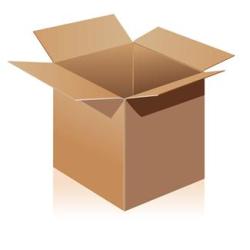Source Institutions
Source Institutions
Add to list Go to activity
Activity link broken? See if it's at the internet archive

In this math lesson, learners participate in a variety of activities that give them experience in recognizing, describing, and extending repeating and arithmetic patterns. Learners begin by describing patterns they find in the room. Next, learners describe the arithmetic or numerical pattern they observe in a skipped rope. Learners also explore patterns as they sing, clap and identify patterns in the educator's "magic box." They are given shapes and challenged to extend the pattern started by the educator. Learners then work at centers to further investigate patterns. Center activities include photographing patterns found outside, stringing beads in patterns, making creations with Tinker Toys and Lincoln Logs, exploring patterns on the computer, reading the "Patchwork Quilt" and creating quilt patterns, and making new patterns for the "Magic Box." (Note: the computer center should be skipped because it does not seem possible to buy the Patternmakers software. The loss of this center will not significantly impact the activity.)
- 30 to 45 minutes
- 1 to 2 hours
- $5 - $10 per group of students
- Ages 6 - 8
- Activity, Lesson/Lesson Plan
- English
Quick Guide
Materials List (per group of students)
- Jump rope
- Magic Box (containing linking chains; plastic store bags; adding machine tape with numerical patterns printed on it; and play one, five, ten, and twenty dollar bills)
- Shower curtain (grid drawn on it)
- Cut-out shapes--stars, clouds, ducks, hearts, etc. (Note: pattern blocks could also be used)
- Envelopes with the various cut-out shapes
- Camera
- Lincoln Logs
- Tinker Toys
- Six 20 in. strings
- Wooden beads of various colors
- "The Patchwork Quilt" by Valerie Flournoy
- Audio of the story "The Patchwork Quilt"
- Crayons and markers
- Unlined paper
- Recorder
- Adding machine tape
Subjects
-
Mathematics
-
Algebra
- Patterns
-
Geometry
- Plane Geometry
- Number and Operations
- Representation
-
Algebra
-
The Nature of Technology
-
The Design Process
- Problem Solving
-
The Design Process
Informal Categories
- Arts and Crafts
- Literature
- Music
- Outdoor Activity
- Photography and Film/Video
- Toys
Audience
To use this activity, learners need to:
- see
- see color
- read
- use keyboard
- use mouse
- be mobile
- touch
Learning styles supported:
- Links STEM to other topics of interest such as arts and humanities
- Involves hands-on or lab activities
Other
This resource is part of:
Access Rights:
- Free access
By:
Rights:
- All rights reserved, PBS, 2012
Funding Source:
- US Department of Education
